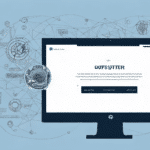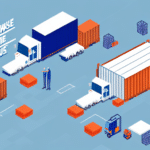What Is Inbound Logistics? A Comprehensive Definition and Explanation
Inbound logistics involves the strategic planning and management of the transportation and storage of goods and raw materials incoming into a business. Its primary aim is to support operations and production processes by ensuring that materials arrive on time, in the correct quantities, quality, and condition. Inbound logistics is a crucial component of the broader supply chain, encompassing all activities related to the movement and storage of products from suppliers to the end consumer.
Understanding the Fundamentals of Inbound Logistics
Essential Role in Business Operations
Effective inbound logistics is vital for the successful operation of businesses, especially those dependent on a consistent supply of goods and raw materials. A well-defined inbound logistics process involves detailed planning, coordination, and execution to ensure timely and efficient receipt of necessary materials.
Cost Reduction and Efficiency Improvement
Optimizing inbound logistics can lead to significant cost savings by minimizing transportation and storage expenses, reducing lead times, and enhancing inventory management. This optimization not only boosts profitability but also provides a competitive advantage in the market.
The Importance of Inbound Logistics in Supply Chain Management
Synchronization of Supply Chain Components
Inbound logistics plays a pivotal role in synchronizing suppliers, vendors, warehouses, transportation providers, and customers. This synchronization allows businesses to better predict and manage inventory levels, responding swiftly to changes in demand.
Enhancing Customer Satisfaction
By streamlining the process of receiving and storing goods, companies can ensure product availability when customers need them, leading to timely and efficient deliveries. This reliability fosters customer loyalty and repeat business, which are essential for long-term success.
Environmental Sustainability
Effective inbound logistics can contribute to reducing a company's environmental footprint. Optimizing transportation routes and minimizing the number of trips required for transporting goods helps lower carbon emissions. Sustainable practices not only benefit the environment but also enhance the company's reputation among increasingly environmentally conscious consumers.
Benefits of Effective Inbound Logistics
- Cost Savings: Reduces transportation and storage costs through optimized processes.
- Inventory Accuracy: Enhances inventory management, minimizing discrepancies.
- Improved Customer Service: Ensures timely availability and delivery of products.
- Operational Efficiency: Streamlines operations, leading to faster cycle times.
- Stronger Supplier Relationships: Fosters collaboration and reliability with suppliers.
Key Components of Inbound Logistics
Planning and Scheduling
Strategic planning and scheduling are fundamental to ensuring that materials are received in a timely and efficient manner. This involves forecasting demand, coordinating with suppliers, and aligning delivery schedules with production needs.
Supplier Management
Effective supplier management ensures that suppliers meet quality standards and delivery timelines. Building strong relationships with suppliers can lead to more reliable and flexible supply chains.
Transportation Management
Transportation management involves selecting the most efficient and cost-effective transportation modes and routes. It also includes managing carriers and negotiating contracts to ensure timely and reliable deliveries.
Warehousing and Inventory Management
Efficient warehousing and inventory management systems are essential for storing incoming goods and managing stock levels accurately. Implementing advanced inventory management systems can reduce errors and improve stock visibility.
Technology Integration
Integrating technology into inbound logistics processes enhances visibility and coordination. Tools such as Enterprise Resource Planning (ERP) systems, Warehouse Management Systems (WMS), and Transportation Management Systems (TMS) facilitate real-time tracking and data management.
How Inbound Logistics Differs from Outbound Logistics
While inbound logistics focuses on the transportation and storage of incoming materials from suppliers to a company's facilities, outbound logistics deals with the movement and storage of finished goods from production facilities to end-users or customers. Inbound logistics includes activities such as receiving and inspecting shipments, managing inventory levels, and coordinating with suppliers. Conversely, outbound logistics involves order fulfillment, packaging, and transportation to customers. Both are critical to supply chain management, and their effective coordination is essential for timely delivery and customer satisfaction.
The Role of Technology in Enhancing Inbound Logistics
Advancements in technology have revolutionized inbound logistics management. Technologies such as artificial intelligence (AI), machine learning, and blockchain provide enhanced visibility, real-time tracking, and data-driven decision-making capabilities. For instance, blockchain technology offers secure and transparent tracking of goods throughout the supply chain, reducing fraud and errors. Additionally, automation and AI can optimize inventory levels and predict demand fluctuations, leading to more efficient logistics operations.
Best Practices for Managing Inbound Logistics Operations
Implement Robust ERP Systems
Enterprise Resource Planning (ERP) systems centralize supply chain processes, providing comprehensive oversight and facilitating better decision-making.
Establish Collaborative Supplier Relationships
Building strong, collaborative relationships with suppliers ensures reliability and flexibility, enhancing the overall efficiency of inbound logistics.
Utilize Advanced Warehouse Management Systems (WMS)
WMS solutions streamline inbound workflows and inventory management, reducing errors and improving operational efficiency.
Optimize Transportation Strategies
Selecting the right carriers and optimizing transportation routes can significantly reduce costs and enhance delivery reliability.
Monitor Key Performance Indicators (KPIs)
Regularly tracking KPIs such as on-time delivery rates, inventory accuracy, and order cycle times allows logistics managers to identify areas for improvement and make data-driven decisions.
Ensure Regulatory Compliance
Staying updated with customs, safety, and environmental regulations is crucial. Compliance helps avoid costly fines and delays, ensuring smooth supply chain operations.
Challenges in Inbound Logistics and Strategies to Overcome Them
Managing Supply Chain Disruptions
Supply chain disruptions can lead to delays and increased costs. To mitigate these risks, businesses can diversify their supplier base, maintain safety stock, and develop contingency plans.
Ensuring Data Accuracy and Visibility
Accurate data is essential for effective logistics management. Implementing advanced tracking systems and ensuring seamless data integration across platforms can enhance visibility and reduce errors.
Coordinating Multiple Suppliers
Managing multiple suppliers requires robust communication and coordination. Utilizing supplier management software and establishing clear communication protocols can improve coordination and reliability.
Sustainability and Ethical Practices
Meeting sustainability and ethical standards is increasingly important. Companies can establish clear guidelines for suppliers, conduct regular audits, and collaborate with partners to improve sustainability practices.
Future Trends in Inbound Logistics and Their Impact on Businesses
Adoption of Automation and AI
The integration of automation and artificial intelligence (AI) is set to transform inbound logistics by enhancing efficiency, reducing human error, and providing predictive analytics for better decision-making.
Blockchain Technology
Blockchain offers a secure and transparent method for tracking goods throughout the supply chain. This technology can reduce fraud, streamline processes, and lower costs, making it a valuable tool for inbound logistics.
Use of Drones for Last-Mile Delivery
Drones are emerging as a solution for last-mile delivery, particularly in urban areas where traffic congestion is a challenge. While regulatory and technical hurdles remain, the potential for faster and more cost-effective deliveries makes drones a promising trend.
Sustainability Initiatives
Increasing emphasis on sustainability will drive businesses to adopt greener logistics practices. This includes optimizing transportation routes to reduce emissions, minimizing packaging waste, and utilizing energy-efficient warehousing solutions.
Staying abreast of these trends will enable businesses to enhance their inbound logistics operations, achieve greater efficiency, and maintain a competitive edge in the marketplace.
Conclusion
Inbound logistics is a vital aspect of supply chain management that significantly impacts a company's operational efficiency, cost structure, and customer satisfaction. By understanding its fundamentals, leveraging technology, adopting best practices, and anticipating future trends, businesses can optimize their inbound logistics operations to achieve sustained growth and competitiveness.




















